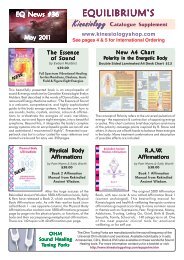You also want an ePaper? Increase the reach of your titles
YUMPU automatically turns print PDFs into web optimized ePapers that Google loves.
IE230 Bromomethane/ Methyl Bromide<br />
Common uses:fumigates soil, commodities, grain, warehouses and mills.<br />
Very toxic, widely used.<br />
IE231 Capryl Alcohol/ 1-Octanol/ Secondary Octyl Alcohol<br />
Common uses: foam-reducing agent, plasticizers, perfumery, cosmetics, solvent, chemical intermediate.<br />
IE232 Cellulose Acetate<br />
Common uses: fibres for clothing and furnishing, lacquer, cellophane, cigarette filters, magnetic tape, spectacle<br />
frames, screwdriver handles.<br />
IE233 Cetyl Alcohol/ Hexadecanol<br />
Common uses: extensively used in pharmaceutical and cosmetics, gel stabiliser for greases.<br />
IE234 Chloromethane/ Methyl Chloride<br />
Common uses: silicones, anti-knock additive in petrol, butyl rubber manufacture, methyl cellulose, blowing<br />
agent for polystyrene foam.<br />
IE235 Decyl Alcohol/ Decanol<br />
Common uses: plasticizers, detergents.<br />
Commercially important.<br />
IE236 1,2-Diaminoethane/ Ethylenediamine<br />
Common uses: detergents, emulsifying agents, industrial solvent, textiles, paper, coatings, films, adhesives,<br />
rubber formulation.<br />
IE237 1,2-Dibromoethane/ Ethylene Dibromide<br />
Common uses: leaded petrol, fumigant for stored products, nematocide.<br />
IE238 Dichloromethane/ Methylene Chloride<br />
Common uses: industrial solvent, paint remover, degreaser, aerosol propellant.<br />
IE239 Diesel Range Organics<br />
Air pollution<br />
Contains n-decane, n-dodecane, n-tetradecane, n-hexadecane, n-octadecane, n-eicosane, n-docosane, n-<br />
tetracosane, n-hexacosane, n-octacosane, n-hexane.<br />
IE240 Dimethylamine<br />
Common uses: manufacture of other chemicals, including solvents, herbicides, fungicides and rubber accelerators.<br />
IE241 Dioctyl Phthalate<br />
Common uses: plastics.<br />
Most commonly used plasticiser; can migrate into food from packaging.<br />
IE242 Ethanol/ Ethyl Alcohol/ Alcohol/ Spirits of Wine<br />
Common uses: starting point for many other chemicals, in foodstuffs, as solvent , cosmetics, alcoholic drinks,<br />
methylated spirit, surgical spirit.<br />
IE243 bis(2-Ethylhexyl) Phthalate<br />
Common uses: one of most common phthalates found in food samples. Carcinogenic in mice and rats.<br />
IE244 Glycolic Acid/ Hydroxyethanoic Acid/ Hydroxyacetic Acid<br />
Common uses: textile and leather processing, cleaning (metals and dairy sanitation);used in cosmetics and<br />
personal care preparations, particularly skin peel preparations.<br />
IE245 Halazone<br />
Common uses: sterilisation of drinking water.<br />
IE246 Jet Turbine Fuel<br />
Air pollution<br />
IE247 Methanoic Acid/ Formic Acid<br />
Common uses: textile dyeing and finishing, leather tanning, intermediate for other chemicals.<br />
IE248 Monoethanolamine/ 2-AminoEthyl Alcohol/ 2-Hydroxyethylamine<br />
Common uses: detergents, emulsifying agents, manufacture of cosmetics, toiletries, bactericidal and herbicidal<br />
products.<br />
Great commercial importance.<br />
Page 84 Copyright Jane Thurnell Read 2012 Testing Kit Description Manual



